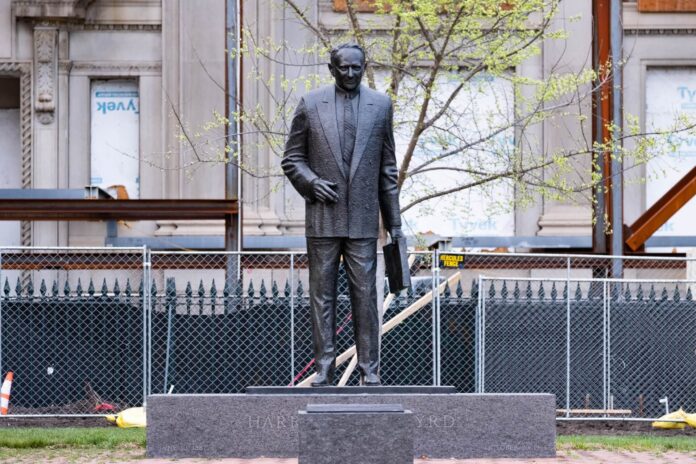Delegate Jay Jones’ bill to direct the state to remove the statue of Harry F. Byrd, Sr. from Capitol Square, a measure he first proposed in June of last year, reported out of the House Rules Committee on Friday and now heads to the full House of Delegates for passage.
“Racism and its symbols, obvious and subtle, have no place in this new Virginia decade,” said Delegate Jones. “Monuments to segregation, Massive Resistance, and the subjugation of one race below another, such as the Byrd statue, serve only as a reminder of the overt and institutional racism that has and continues to plague our Commonwealth. It’s long past time to bring them down, and I’m proud to be a voice to do just that.”
Harry Flood Byrd Sr. – who was from Berryville in Clarke County, Virginia, – was a newspaper publisher, politician, and leader of the Democratic Party in Virginia for four decades as head of a political faction that became known as the Byrd Organization.
Byrd served as Virginia’s governor from 1926 until 1930, then represented it as a United States Senator from 1933 until 1965. He came to lead the “conservative coalition” in the United States Senate, and opposed President Franklin D. Roosevelt, largely blocking most liberal legislation after 1937. His son Harry Jr. succeeded him as U.S. Senator, but ran as an Independent following the decline of the Byrd Organization.
Byrd succeeded to what had been the Virginia Democratic Party organization of U.S. Senator Thomas Staples Martin, who died in 1919. Elected the 50th Governor of Virginia in 1925, initially Byrd reorganized and modernized Virginia’s government. His political machine dominated state politics for much of the first half of the 20th century. Financial conditions in Virginia during Byrd’s youth conditioned his thinking on fiscal matters and “pay-as-you-go” financial policies.


